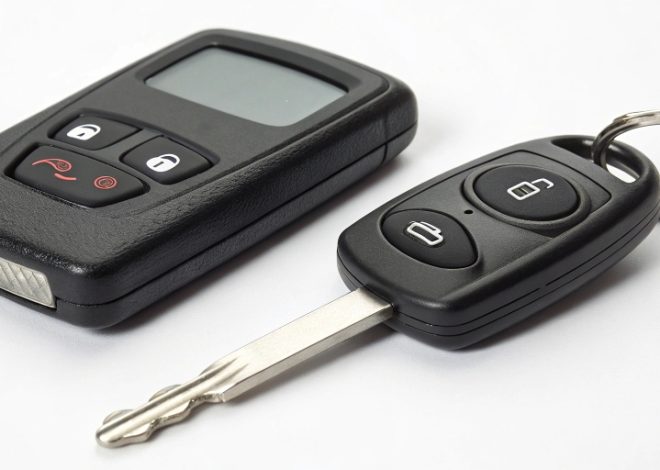
Understanding Burnt Clutch Smell in Stop-and-Go Traffic: Causes, Symptoms, and Solutions
A burnt clutch smell often emerges in stop-and-go traffic, where constant shifting and clutch engagement are common. This odor, sometimes described as a sharp, acrid scent, signals that the clutch disc or clutch components are overheating. According to automotive experts, the smell arises when friction material on the clutch disk wears down due to excessive friction. Drivers in urban areas or those navigating heavy traffic are particularly prone to this issue.
The clutch, a critical part of manual transmission vehicles, connects the engine to the gearbox. When you press the clutch pedal, the clutch fork engages the clutch release bearing, separating the clutch disc from the pressure plates. However, frequent starts and stops can overheat these parts, leading to a clutch smell. Curious about why this happens? Let’s explore the root causes.
Why Does a Burnt Clutch Smell Happen?
Several factors contribute to a burning clutch smell, especially in modern vehicles with manual transmissions. Here are the primary culprits:
- Clutch Slippage: A sign of clutch slippage occurs when the clutch fails to fully engage, causing the engine revs to rise without corresponding acceleration. This generates heat, wearing down the friction surface and producing a burnt smell. Studies suggest that 20% of clutch-related issues stem from slippage, particularly in vehicles with high mileage, like those at 36k miles or 43k miles.
- Heavy Traffic and Traffic on Hills: Constant clutch control in bad traffic or on inclines strains the clutch kit. The clutch surface overheats as drivers repeatedly engage and disengage the pedal, leading to clutch wear.
- Worn or Faulty Clutch: A worn clutch or bad clutch, often seen in vehicles with loads of miles, struggles to grip properly. This increases friction, causing a clutch burning sensation and smell.
- Improper Driving Habits: New drivers or those unfamiliar with clutch freeplay may ride the clutch, keeping it partially engaged. This constant friction accelerates clutch damage and produces a smell in traffic.
- Low Clutch Fluid: The clutch reservoir, part of the hydraulic system, relies on clutch fluid to operate the master cylinder and slave cylinder. Low fluid levels can lead to poor clutch performance, increasing the risk of a burnt smell.
External factors, like a hot engine or engine bay heat, can exacerbate the issue. For instance, engine coolant or engine oil leaks near the clutch components may amplify the odor, though they’re less common culprits.
Recognizing Symptoms of Clutch Failure
Spotting the symptoms of clutch failure early can save you from costly repairs. Beyond the burnt clutch smell, here are key indicators:
- Difficulty Shifting Gears: A faulty clutch or clutch linkage may make shifting feel stiff or grindy, signaling potential clutch drag.
- Slipping Gears: If the engine revs but the car doesn’t accelerate, it’s a clear sign of clutch slippage, often linked to a worn clutch disc.
- Unusual Noises: A failing throw-out bearing or clutch fork may produce grinding or squealing sounds when the clutch pedal is pressed.
- Burning Smell in Traffic: The smell issue is most noticeable during heavy traffic, where frequent stops overwork the clutch components.
- Reduced Clutch Longevity: A clutch replacement may be needed sooner if you notice these signs, especially in vehicles with a factory clutch nearing the end of its lifespan.
Mechanics often recommend a clutch check if these symptoms persist. Mobile mechanics or a trusted mechanic for advice can diagnose issues like clutch drag or a failing starter motor, which may mimic clutch problems.
How to Prevent Clutch Damage
Preventing clutch damage starts with mindful driving and regular maintenance. Here’s how to extend your clutch’s life:
- Master Clutch Control: Avoid riding the clutch by fully releasing the pedal when not shifting. Proper clutch freeplay ensures smooth operation.
- Minimize Stop-and-Go Strain: In traffic on hills, use the handbrake to hold the car instead of balancing with the clutch pedal. This reduces wear on the clutch disk.
- Check Clutch Fluid Regularly: Ensure the clutch reservoir is topped up to prevent issues with the master cylinder or slave cylinder.
- Schedule Routine Clutch Checks: A guide to clutches recommends inspecting the clutch kit every 30,000 miles, especially in vehicles prone to heavy clutches.
- Avoid Aggressive Driving: Rapid shifts or engine braking in a grunty-motor vehicle can stress the clutch components, leading to premature wear.
For drivers of vehicles like the MK2 – Gearbox & Clutch or anfieldroad clutch models, following manufacturer guidelines is key. Regular maintenance can prevent clutch-related issues and ensure a long-lasting clutch.
When to Seek Clutch Repair or Replacement
If you notice a persistent burnt clutch smell or other symptoms, it’s time to consider clutch repair or clutch replacement. A mechanic can assess whether the clutch disc, pressure plates, or throw-out bearing needs replacing. For instance, a clutch kit replacement typically costs $500–$1,500, depending on the vehicle and labor rates.
In some cases, minor issues like low clutch fluid or paint matching issues (from prior repairs) can be resolved without a full replacement. However, a bad clutch or significant clutch wear often requires a complete overhaul. Delaying repairs can increase collision risk or cause damage to vehicles, as a failing clutch may lead to unexpected stalls.
Interesting Facts About Clutches
Did you know that clutch technology has evolved significantly? Modern vehicles often use advanced friction palates to improve grip and reduce wear. However, electric vehicles are phasing out traditional clutches, relying on single-speed transmissions instead. Despite this, manual transmissions remain popular among enthusiasts for their tactile feel, with forums like lracerk Clutch buzzing with advice for drivers.
Another surprising stat: clutch failure is one of the top five reasons for roadside assistance calls in urban areas. This highlights the importance of attention for clutch slippage and regular maintenance, especially for fast-moving, solid, heavy vehicles.
Banishing the Zap: A Comprehensive Guide to Car Interior Fabric Static Reduction
FAQs
-
What causes a burnt clutch smell in traffic?
A burnt clutch smell often results from clutch slippage, overuse in heavy traffic, or a worn clutch disc overheating due to excessive friction.
-
Can I drive with a burnt clutch smell?
Driving with a burnt clutch smell is risky. It may indicate clutch damage, which could lead to failure or costly repairs if ignored.
-
How can I extend my clutch’s lifespan?
Regular clutch checks, proper clutch control, and avoiding riding the clutch in traffic can significantly extend your clutch’s lifespan.
4. Is a burnt clutch smell dangerous?
While not immediately dangerous, a burnt clutch smell signals potential clutch failure, which can lead to breakdowns or unsafe driving conditions.
Have you experienced a burnt clutch smell in your car? Share your story in the comments below or let us know your top tips for clutch maintenance! If you found this article helpful, share it with fellow drivers or explore our other automotive guides for more expert advice.
Read More:
How to Disconnect Car Battery: The Ultimate Guide for Safe and Efficient Maintenance
Changing the Power Steering Pump on a Kenworth T680: A Step-by-Step Guide




